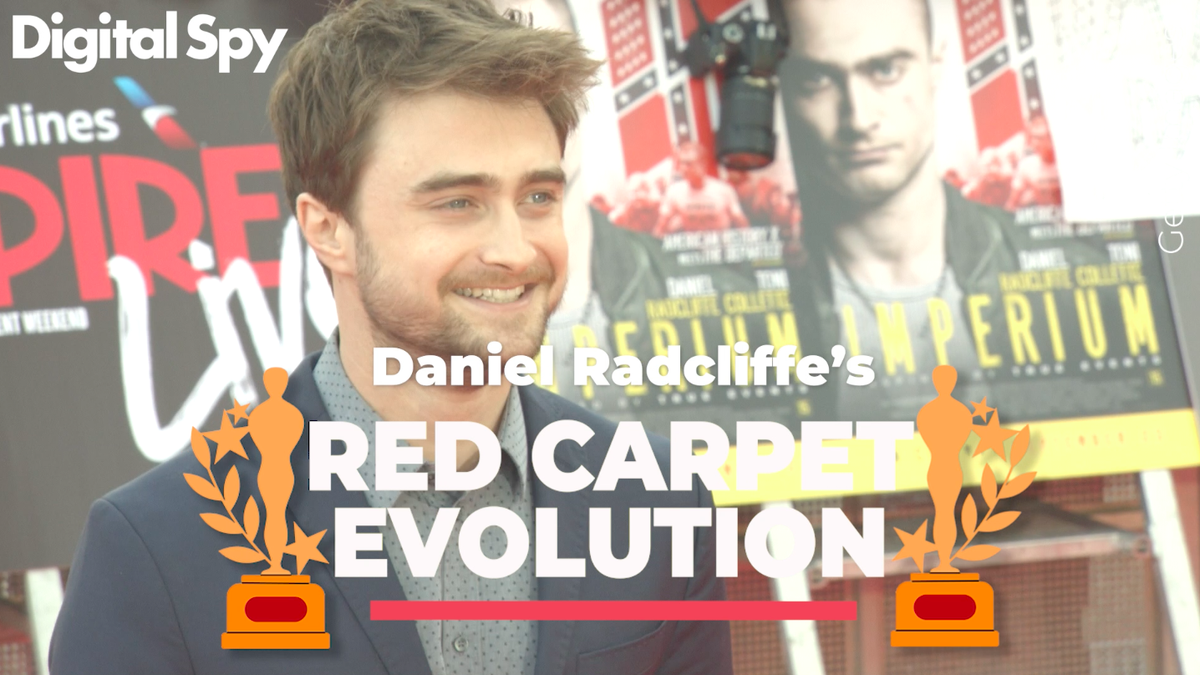This article contains spoilers for The Flash
Daniel Radcliffe is a sensible man. He’s parlayed enormous wealth at a ludicrously young age into a career having fun in odd movies that might never have made a dent without having Daniel Radcliffe in them. He’s patiently answered the question every time anyone asks about JK Rowling. And now he’s decided that he’s not going to be doing any cameos in the new Harry Potter TV reboot.
“I don't think so, no,” he told Deadline. “Certainly, everything I've read about the series they're starting fresh, so it'd be a bit weird to have me pop in... I think that Harry Potter was always destined to become like Sherlock Holmes... There's probably an eight-year-old kid out there whose life is going to change in a couple years, so my brain does go there. But the films continuing – or the series, in this case – was inevitable.”
He’s very sanguine about the whole thing. “Harry Potter was always going to be something that carries on and on and on. It’s way too big a literary phenomenon to stop with the series of films that we did. So I always knew these things would be happening. It’s nice to pass it on to someone else.”
Which is as eminently head-still-attached-to-shoulders as you’d expect of Radcliffe. It’s clearly not a good idea for him to pop up. No formulation could possibly be worthwhile. He'd just be there looking very much like a 30-something Harry Potter, which would be a bit confusing given there’s already one 11-year-old Harry Potter about.
But he’s a rarity in that he knows that it would be a bad idea for him to take up the offer. With the amount of multiverses and three-star revivals of fondly remembered old IP piling up out there, a lot of movies now feel incomplete without some interloper from a completely different story sticking their head round the door to say a quick hello.
There are many different kinds of cameo. Let’s take The Flash, for instance, because it’s absolutely stuffed with them. When the Barries sprint through space-time and see different realities playing out, a Superman played by Nicolas Cage definitely is a cameo; the little portions of Christopher Reeve aren’t. George Clooney rocking up at the very end is primo cameo material too.
Cage’s appearance is a Fan Gag Cameo, much like John Krasinski’s brief stint as Reed Richards in Doctor Strange 2. Clooney’s appearance is the kind that Radcliffe is very much not entertaining: the IP Continuity Anchor Cameo. That’s where someone who was involved in another era of the same thing sprinkles some legitimacy on the whole endeavour, taking their bow and hopefully reminding older audiences of why they liked the thing in the first place. (This, admittedly, is not what anyone who saw Batman & Robin will have felt.)
It’s the movie equivalent of those slightly suspect ‘rants’ radio and podcast hosts go on, which only really exist to be clipped up, subtitled and spread around social media: they don’t serve much purpose in themselves, other than to act as an advert for the main event. While those 90 seconds of James O’Brien are supposed to make you feel angry, though, the IP Continuity Anchor Cameo is meant to calm you down and reassure you that whatever the content sausage factory does to your beloved childhood memories, it’s being done with the utmost love and respect for the original idea. This is usually nonsense.
Then there’s the kind Marvel likes, the Meet Your Next Movie Cameo, which exist to trail breadcrumbs for the next instalment. They used to be fine, before they became part of the furniture. Now, I just get the feeling that perhaps someone should have been concentrating on making the movie I was already watching interesting before getting hype for the next one. And now all I can remember about Venom is Woody Harrelson in a wig.
There are some acceptable cameos. A nod to a departed cast member or beloved forebear can be a lovely thing, though the Fare Ye Well Cameo very much a continuum of cringe. At one end, there’s Paul Walker’s little farewell at the end of Furious 7: sweet, brief, and disconcertingly well-judged. At the other there’s the ghost of Harold Ramis’ Egon Spengler in Ghostbusters: Afterlife, which felt more like mawkish puppetry of a dead man.
But I think, on balance, it might be time for an absolute moratorium on cameos. Perhaps in time we can sort out some kind of cameo licensing system. Bill Murray will not be allowed into any more Ghostbusters properties, having already quipped through Afterlife and been thrown out of a window in Paul Feig’s reboot. Sorry Bill. Wes Anderson’s going to have to start making some efficiencies too.
Back in the early days of cinema, the word ‘cameo’ for a short, impactful appearance was borrowed from the word for carved gemstones depicting small scenes or historical celebs. The idea of the carved cameo was to be instantly recognisable, and didn’t give any extra context. That’s exactly the problem with the cameo culture which has swamped the biggest movies.
In an attempt to make everything feel tied together and coherent, cameos just make everything feel more hamfistedly smushed together. You were invested in one story; now you’re thinking about another one, and resisting the urge to Google how old that actor is. And it is, to be frank, pathetic. If you’ve enough confidence in your story and characters, you don’t need to lean on another, better story and characters which happen to be made by the same studio. We can see what you’re doing. It looks bad.
Hopefully Radcliffe’s reticence to get involved with the Potter-verse again makes some actors think twice about their cameos. But given how thoroughly sensible he is, it doesn’t seem likely.













